

The Joy of Working From Home:
Reworking the Way We Work:The Art of Making a Life
While Making a Living. (SM)
by Jeff Berner
© 1996, Jeff Berner.
All rights reserved.
Contacting and Keeping Clients
While you are celebrating the joys of working from home, including the freedom to work around-the-clock or to skip work for entire days, remember that hardly anything ever succeeds solely on its own merits. Running your own business should include consistent job-seeking even when you have current clients or customers. The best way to preserve the pleasures of the independent life is to make it a habit to do something at least every day or two to get out your message. There are lots of ways to communicate the pride and joy you take in providing your product or service. The important thing is to make sure your story is told to the right people, at the right time, and often.
Join business organizations, such as your local chamber of commerce and professional or trade associations specific to your business. Network. Attend meetings and functions and get involved. Let your auto mechanic  and your dentist know that you are establishing a home-based business. They will probably want to help by connecting you with potential clients. (If you offer a service you have "clients"; if you sell products you have "customers.") And whenever you hand your business card or brochure to someone, give two. The second one just may get into the hands of someone looking for somebody exactly like you.
and your dentist know that you are establishing a home-based business. They will probably want to help by connecting you with potential clients. (If you offer a service you have "clients"; if you sell products you have "customers.") And whenever you hand your business card or brochure to someone, give two. The second one just may get into the hands of someone looking for somebody exactly like you.
If you are still working close to the corporate world, the best sources of clients and referrals are your colleagues. Signing up your former company as your first account is a great way to start your new venture. Management and former teammates already know what you can do and what you are like to work with. And it's especially attractive for them to still have your talents available without the added costs of benefits. But if you don't have an opportunity like this, there are many things you can do to make your message reach the eyes and ears of the right prospects.
First, make a habit of reading newspapers as though you were looking for a job. But don't hover over the classifieds. Read news stories about reorganizations, product-line announcements, and other indications that businesses need new people and additional services. Find a need and fill it!
Cold Calling
Go to Top of Page.
The goal of a cold telephone call is to pleasantly and clearly let potential clients know who you are, what you have done, what you can to do for them, and how they will benefit from your service or product. "Cold" is an unfortunate term that simply means you are calling without an invitation. There should be nothing cold about it.
Try to make your calls on Tuesday, since by then your prospect has gotten Monday out of the way and has set a pace for the week. If you must call on a Monday, do so after lunch. The person who receives your call—if you get past the assistant or the answering machine—will have taken care of a lot of work in the morning and returned from lunch more relaxed. Wednesday isn't good because it's the twilight zone between the first half of the week and the heading-home days of the second half. Thursday is fine, but Friday is the worst day to call since people are already imagining the weekend. But don't let these rules of thumb get in your way if you are truly inspired, especially if the day's news applies to your business and gives you a timely reason to make contact and a current topic to discuss.
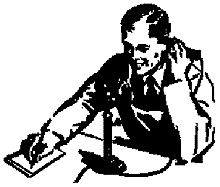
If you feel timid about making those all-important calls, think of them simply as "first" calls, ones that start the sales-and-project cycles and long-term relationships. With the proliferation of voice mail and answering machines, you are likely to reach a device rather than a person anyway, which allows you to present yourself with no interruptions. Introduce yourself, leave a message that's short and sweet, and give your name again and your phone number at the end. Close with, "I look forward to hearing from you," or, "Thanks for listening." If you don't hear back within a few days, call back until you get a definite "I'm really not interested." Otherwise, you may be overlooking a prospect who was simply too busy with other matters to respond to you more quickly.
Whether you make your phone calls on Monday mornings only on spring days under the sign of Leo, or only on Thursdays during leap years—one thing is true the year round: If you don't make the calls, you probably won't get the business! No one likes rejection, but the salesperson who hears no the most also hears yes the most. Or, as a character said in one of those colorful Damon Runyon stories, "No horse ever won a race it didn't enter."
There are simple things I do to get the most out of my follow-up calls. I always begin by saying something like, "Bob Hirsch is expecting my call. This is Jeff Berner." I say my name last to spare the receptionist the task of asking, "What did you say your name was?" When Bob gets on the line I will briefly remind him who I am. "This is Jeff Berner, the fellow who wrote the booklet about working from home. You asked me to call today." This puts the ball in his court.
Don't lose heart if you don't succeed the second time. Look confidently toward a future opportunity to make a third or fourth contact after a reasonable period of time. If subsequent calls aren't accepted or your voice mail message isn't returned, don't take it personally. Only about 17 percent of all business phone calls get through to the right person on the first try, including expected calls. Keep trying until you get a definite no. Even though some people say no by ignoring you, you won't know which ones they are unless they finally tell you so.
Elaine de Man found this out during her sixth and what she thought would be her final call to a potential client. She and her partner, aerial photographer Jordan Coonrad, publish a calendar of world-class golf courses as seen from the air, called "Fairways to Heaven." She was trying to sell the calendars in large quantities to companies for use as premium gifts customized with the firm's name. She had about given up on one fellow who never returned her calls, but decided to try him just one more time. When he picked up the phone and heard it was she, he was delighted. "I'm glad you called!" he told her, "I've been carrying your phone number around with me for a couple of weeks, but haven't had a chance to call." He ordered fifteen hundred calendars on the spot, and has since become her biggest customer.
If prospective accounts reply, "Not at this time," ask in a relaxed, conversational way if you may contact them again. If they suggest a time or date, make a commitment: "I'll give you a call during the first week of July." Then, absolutely, positively, call them on the specified date. This not only fulfills the social contract you have made with your prospect; it sets you apart from the hit-or-miss crowd that will just keep trying other numbers if they don't score the first time. You will have performed by doing what you said you would do when you promised to—an increasingly rare quality that is noticed and appreciated.
I have had to wait up to a year or more for some of my own follow-up calls to pay off. In 1988, the marketing director of Okidata asked me if I would be interested in writing and designing a sixteen-page booklet featuring celebrity spokesperson Steve Allen to introduce a new computer printer. I answered that I would be able to jump into the project within a few days. One full year went by before I had a contract, but my enthusiasm never waned. I phoned every few weeks to see how their plans were developing, sent cartoons about the computer industry, and sent occasional faxes. They often replied that we would be working together "in a week or two." After the complex machinery of corporate management clicked to the right combination, the lock opened and I was flown to their New Jersey headquarters to start the job. The first evening, over dinner at a Japanese country inn, I asked their decision-maker why he had chosen me when there were hundreds of similar talents just across the river in Manhattan. He replied that after seeing how my interest in his project never flagged, he knew I would surely be fully dedicated to the project once I got my teeth into it.
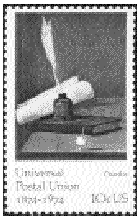
Direct Mail
Go to Top of Page.
If you have created a brochure, mailing it directly to your prospective clients or customers can be an effective business builder. Unfortunately, the direct-mail industry has learned that you must send approximately seven individual pieces before you will get a response. Follow-up calls to the person to whom you addressed the mailing is essential to making your efforts pay off. Some mailings hit on the first try; others never take hold amid the masses of daily mail we all receive. Statistically, if you get a 3-percent response on a single mailing, you are doing very well.
You can increase your chances enormously by carefully building a mailing list or by purchasing lists from houses that specialize in them. Computerized mailing-list houses will send you a catalog of the lists they maintain, such as people who go camping three times a year or more, or those who buy a lot of photographic supplies. They can rent or sell you a list so finely tuned that you can practically reach all the left-handed women dentists practicing in North Carolina if you need to. The categories are endless, and the lists are regularly updated so you won't be sending material to the dead-letter office. Renting lists isn't cheap, but if you have the right list and the right message, it can be very effective.
If you are computerized, buy a mailing list from a supplier who will supply it on a disk compatible with your computer, and print it out on clear labels with a type face that harmonizes with your stationery. Better yet, print directly on your envelopes with a laser printer, producing the most professional appearance possible. Whatever you do, don't hand-address envelopes unless you are a calligrapher or have clear, professional handwriting such as the kind architects are known for. If your only choice is to purchase lists on pre-printed labels, be sure to see a sample of the printed product first to make sure it won't detract from your image.
you might want to invest in a software system that cleans your mailing list by eliminating duplicate and undeliverable addresses, then prints the addresses directly onto envelopes. It's a good long-term investment for a small business that does a lot of direct-mail marketing.
With your own computer and laser printer, you can harness the infinite power of computer-aided marketing to print a cover letter tailored to each potential client. Let's say you are a consultant in the landscape-gardening business, and a business park you read about in the newspaper is having trouble with deer munching on their shrubbery. In your letter to them, you simply mention that you are especially knowledgeable about ways to encourage deer to eat at some other salad bar. Avoid using the artificial approach—"As you know, Mr. Frederickson"—that is so common in junk-mail letters, but do localize your cover letter to your potential client's particular needs.
Time your mailings to the seasons. For example, if your product or service is tied to Christmas, make sure it arrives before December twenty-fifth. And keep in mind that your prospects are more likely to have the money to buy what you are selling before—or quite a bit after—tax time.
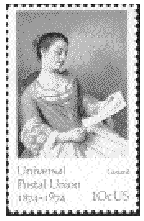
The Art of Postage
Go to Top of Page.
Tests have shown that postage stamps stimulate better response than metered mail, which practically shouts "junk mail." Furthermore, if you stick the stamp on slightly crooked you will get an even better response. I take the art of postage stamps one step further by using "antique" commemorative stamps that date as far back as 1938 on all my business correspondence. I buy them at or near face value from stamp dealers who advertise in the yellow pages. This assures that my letters stand out in the avalanche of mail and may get opened first.
For example, I will put a 1949 stamp that commemorates the Minnesota Territorial Centennial on a letter to a Minnesotan, and a stamp commemorating the fiftieth anniversary of the trucking industry to a correspondent in the transport business. Since most of these great old stamps are three- and four-cent denominations, I supplement them with modern stamps, but they still stand out. I know they are appreciated because my correspondents often call to let me know how much they enjoy receiving my mail. Some of them even frame the stamps that apply to their profession or give them to their children to start their own collections. These are the details that count.
The Press Release
Go to Top of Page.
One of the easiest, least expensive, and most effective ways to raise your profile is to issue a press release. A good press release may make it into the newspapers or inspire an editor to send a reporter out to interview you for a feature story. If newspapers will write about a two-headed calf, they will probably write about you. Good news always appeals to feature editors at newspapers and radio and TV stations across the country, and local papers are constantly looking for stories with a local angle. Don't underestimate the exposure value of neighborhood throw-away shopping-news publications. And don't be afraid to aim high. If you think you have something to offer of national interest, send it to Newsweek, Entrepreneur, or any other magazine you think it might fit.
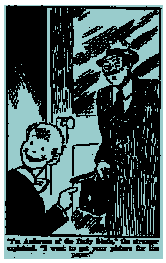
Just about anything can qualify as a news item. You can announce that you are setting up shop, along with the results of the research you did that made you decide to offer your services—say, as a landscape designer. Perhaps you are offering something that has never been seen before in your town. Or you can announce a major project you have just been assigned or recently completed. The idea is to get your name out there as often as possible so people begin to think you are the only landscape designer of note in the whole area.
Before you or someone you hire writes the release, study the publication you are aiming for to see what section or department your information might fit. Call the paper or magazine for the name of the editor who handles your subject area. Then address the release and a cover letter to him or her. You can even write a number of press releases with different angles aimed at different editors at the same publication.
While just about anything goes for the content of the press release, there are some basic requirements. It should be printed on your letterhead. In the top right corner, type CONTACT: followed by your name and phone number where you can easily be reached, even if it appears on your letterhead. Underneath, type FOR IMMEDIATE RELEASE or FOR RELEASE AFTER and a date. Precede the main body of text by a short headline that sums up the release: "Gardener Launches Garden Design Service." Double-space the text, use wide margins, and keep it to a single page. If you must go to two pages, type on only one side of each page and type MORE at the bottom of the first. End the release with either ### or --30-- centered below the last paragraph.
Put your best efforts into the first sentence, which can make the difference between your press release being read or not. Tell your story in as few words as possible, and finish the first paragraph with the most important information. Use quotes that enhance the information, but avoid superlatives that sound phony, even if they are true: "‘This is the most revolutionary business ever launched in Fiddletown!' says Dr. Halliburton Thirstquench." Just tell it straight, and an editor will easily recognize if your story is useful. Whatever you do, don't try to show off your writing skills here, even if you are an accomplished writer. If you have no special talent or time for writing, engage a publicity or public-relations professional. The Public Relations Society of America, at (212) 995-2230, can refer you to someone in your area available for short-term projects.
When writing the copy, be honest, direct, and clear. Keep in mind that the editors getting your release receive lots of other press releases and have limited time. The less work the editor has to do rewriting or polishing what you send, the more likely your release will be published. If you do your homework and write well, chances are it will be published verbatim.
If you want to send a photo of yourself, your product, or your home office, hire a professional photographer. Black-and-white prints should be five by seven inches with a glossy finish. Attach a short, informative caption, typed on a separate piece of paper, to the back of the photo. Send color transparencies only if you know a publication prints color, such as a magazine or Sunday newspaper supplement.
Remember, this is free advertising. You will have no control over if and when it appears. You will know you have made it into print when your phone starts ringing with inquiries or congratulations. If you don't make headlines right away, don't think for a moment that you have failed. Don't call the paper. Just wait a few weeks and try again with something new.
When you do make it into the pages of a magazine or newspaper, buy as many copies as you can and include the article in your portfolio as a record of your public image.
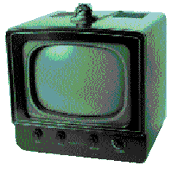
Television and Radio
Go to Top of Page.
Copies of articles about you, along with a press release, photo, and business card, constitute a press kit. This is a good thing to have on hand in case a newspaper or magazine asks for one, and is also a great way to introduce yourself to your local radio or TV station. Noel Coward had a great attitude toward television. "Time has convinced me of one thing," he said, "Television is for appearing on—not for looking at." Appearing on a talk show or newscast can make a big difference in your business or career, and it can be a lot of fun. Don't be afraid to give the national shows a try either, such as "Good Morning, America!" The worst that can happen is that they will pass. Simply call your local stations or the networks, ask who handles guest bookings, and ship them your press kit. If you do appear on television, ask for a videocassette of your appearance. If you place your order on the same day you appear in the studio, it will be easier for them to locate the footage. Or you could arrange to have a friend tape your appearance with a VCR. Tape any radio or live appearances as well.
Your sound and videotapes will come in handy later when you solicit lecture bureaus, service clubs, or trade associations for speaking engagements. You can also use them to analyze your presentation by looking into the "living mirror" of videotape to improve your next appearance. I learned this the hard way a few years ago when I appeared on a half-hour interview and call-in television show. I felt relaxed during the broadcast, but when I received the videotape a week later, to my shock, I saw myself blinking constantly. It made me look nervous and uncertain even though I was discussing subjects I felt very confident about. The problem was the combination of bright lights and dry eyes. Now I use eye drops before I appear in front of an audience.

Public Speaking
Go to Top of Page.
Another way to get prospective clients to beat a path to your door is to speak before professional associations. Speaking makes you an authority in the eyes of the audience, and it provides you with an opportunity to exchange business cards and establish lasting contacts. A good way to introduce yourself and garner an invitation to speak is to send out a press release.
Over the past twenty-five years I have spoken before many groups, often at no charge. But the exposure brings me a number of challenging and sometimes lucrative offers each year. A photographer I know occasionally gives free slide shows and talks at service clubs and professional groups. As a result, when they need to hire a photographer, they usually think of him. He estimates that these customers account for nearly 20 percent of his income.
Unfortunately, public speaking ranks among America's ten worst fears—just ahead of going to the dentist. If you are a beginner in the speaking arts, practice with a small group of family and friends. Put your main topics in large print on index cards in the order you want to bring them up, and use them as cue cards.
If you want to be a more confident speaker, contact the American Platform Society or Toastmasters International. Both have chapters in many cities throughout the nation and offer workshops that will help you develop your speaking skills. Once you are in front of a real audience, remember that the audience is there because they want to hear what you have to say. They aren't expecting an actor, but a real person who can inform and empower them. They are on your side. Winston Churchill, considered one of this century's great orators, overcame his own terror of speaking by taking a moment before his speech, smiling at the audience, and then using simple language and a personal tone as though speaking to just one person. He never began his talks with a joke, but rather reserved humor as a surprise for later on. He also reminded would-be speakers that a speech must be geared to the ear. Churchill, by the way, had a speech impediment. It didn't stop him for one second. His charisma was legendary.
Newsletters
Go to Top of Page.
Important as the media and public appearances are, you don't have to depend upon them. One good and possibly profitable way to develop a consistent vehicle for self-promotion and public relations is to publish your own newsletter. It should contain news and useful information about you and your product or service, and it should have plenty of space to feature one or more of your customers' stories. It should also carry information about your industry or profession, which allows your current and prospective customers know that you are actively keeping abreast of things.
A four-page newsletter four times a year can do the job for most small enterprises. If you aren't an experienced writer, enlist someone to write your newsletter on a schedule that releases an issue with each of the seasons pertinent to your business. Have a professional design the first issue in a page-layout software program (such as PageMaker or QuarkXPress) and supply you with a template you can use for subsequent issues. Print the newsletter on your own laser printer, or have it printed in a walk-in copy shop. Then send it in an envelope (don't forget to use real postage stamps) so it won't arrive bent, torn, or looking like junk mail.
If done right, your newsletter may eventually grow into a profit center. Though most newsletters are sent free, some subscribers are willing to pay for specialized information. Pricier ones usually contain confidential research that is costly to develop, are supported by a very small subscriber base, and may cost $295 or more for four issues.
Barbara Brabec, who has been publishing the Self-Employment Survival Letter quarterly for more than a decade, says that the only way to start a successful paid subscription publication is to build a strong local base for a year or two. Then, either continue keeping the subscriber base solidly focused on local businesses, or expand geographically in increments. Casting a wide net to reach a national audience can cost a great deal of money and time.
Advertising
Go to Top of Page.
For most home-based businesses, the phone calls, brochures, press releases, newsletters, and other promotional vehicles we have looked at work quite well. However, if you also have a budget for paid advertising, consider the investment with care. Unless you are thoroughly knowledgeable about advertising, carefully select and hire experienced writers, creative talent, and media-placement experts. It takes a real pro to create and place effective ads—and even the pros sometimes drop a coin down a well and don't hear a splash!
The world of print, radio, television, billboard, and other advertising has become so frenetic that it frequently requires the kind of money few home-based businesses can risk to stand out in the crowd. In recent years many smaller companies have shifted much of their advertising budgets into public relations by sponsoring charitable activities, concerts, festivals, golf tournaments, and other activities that bring them not only attention, but appreciation and good will. In a noisy marketplace, it sometimes pays to whisper rather than shout.
On the positive side, with a healthy budget you can hire an ad agency that will design your entire identity—from the name of your business to the look of your publications, invoices, and forms—and then launch your image before the public. The best agencies that provide this kind of corporate design program will involve you in the process, just as your tailor does when making a suit. One size doesn't fit all.
Resources
Go to Top of Page.
If you are one of the thousands of executives and middle-level managers suddenly out of work, consider marketing your particular skills by starting your own consulting service. Selling Your Services: Proven Strategies for Getting Clients to Hire You or Your Firm by Robert W. Bly (Henry Holt & Co., 1990) is a valuable resource. Bly, a veteran copywriter and author, provides upbeat, practical tips for anyone trying to sell their services.
Great Connections: Small Talk and Networking for Businesspeople, by Ann Baber and Lynne Waymon, includes tips and techniques to help you move comfortably and professionally from the first hello to the last good-bye. It tells you how to generate business leads, build long-term relationships, and get the most out of conventions and professional meetings. Exercises and quizzes are included to help you build confidence and check your expertise. Available from Waymon & Associates, 622 Ritchie Avenue, Silver Spring, MD 20910. (301) 589-8633.
To reach markets beyond your hometown, get the current annual edition of The Corporate Address Book: The Complete Directory to Who's Who and What's What in American Business Today (Perigee Books, Putnam Publishing Group, New York).
If you plan to use direct-mail marketing, see Secrets of Successful Direct Mail (NTC Publishing, 1993) by Richard V. Benson, a direct-mail consultant and advisor to Ogilvy & Mather, R.L. Polk, and others. Benson has used direct mail to market practically everything: tours and travel clubs; memberships and magazines; cookbooks and collectors' plates. He shares insights and secrets gained as an agency principal and consultant to American Heritage and Time-Life. From VGM Career Horizons, 4255 West Touhy Avenue, Lincolnwood, IL 60646-1975. (708) 679-5500.
If you plan on writing your own press releases, the Media How-To Handbook will give you lots of help. It's available from the San Francisco Media Alliance for about six dollars. Media Alliance, Building D, Fort Mason, San Francisco, CA 94123.
If you want to attract nationwide invitations to speak, consider getting a listing in The Yearbook of Experts, Authorities and Spokespersons (also known as The Talk Show Guest Directory). For information write to Broadcast Interview Source, 2233 Wisconsin Avenue, Washington, DC 20007. (202) 333-4904.
 Click here
Click here
To receive a FREE issue to Jeff Berner's
Success Working From Home Newsletter
For ordering information on Jeff Berner's newest book,
The Joy of Working From Home.

© 1996, Jeff Berner. All rights reserved.

